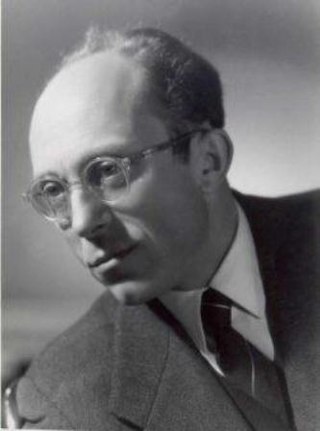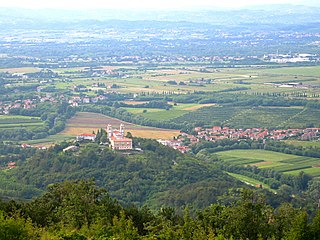Pahor is a Slovene surname, found mostly in the Slovenian Littoral and in the Province of Trieste (Italy). According to the Statistical Office of the Republic of Slovenia, Pahor is the 233rd most common surname in Slovenia, and on 31 December 2007, it was used by 837 Slovenian citizens with permanent residence in Slovenia. It is also one of the most common surnames among Slovenes in Trieste, Italy, and in some areas of the Karst region in Slovenia.
It may refer to:
The history of Slovenia chronicles the period of the Slovenian territory from the 5th century BC to the present. In the Early Bronze Age, Proto-Illyrian tribes settled an area stretching from present-day Albania to the city of Trieste. The Slovenian territory was part of the Roman Empire, and it was devastated by the Migration Period's incursions during late Antiquity and the Early Middle Ages. The main route from the Pannonian plain to Italy ran through present-day Slovenia. Alpine Slavs, ancestors of modern-day Slovenians, settled the area in the late 6th Century AD. The Holy Roman Empire controlled the land for nearly 1,000 years. Between the mid-14th century through 1918 most of Slovenia was under Habsburg rule. In 1918, most Slovene territory became part of the Kingdom of Serbs, Croats, and Slovenes, and in 1929 the Drava Banovina was created within the Kingdom of Yugoslavia with its capital in Ljubljana, corresponding to Slovenian-majority territories within the state. The Socialist Republic of Slovenia was created in 1945 as part of federal Yugoslavia. Slovenia gained its independence from Yugoslavia in June 1991, and today it is a member of the European Union and NATO.

The Karst Plateau or the Karst region, also locally called Karst, is a karst plateau region extending across the border of southwestern Slovenia and northeastern Italy.

Boris Pahor, OMRI was a Slovene novelist from Trieste, Italy, who was best known for his heartfelt descriptions of life as a member of the Slovenian minority in pre–Second World War increasingly fascist Italy as well as a Nazi concentration camp survivor. In his novel Necropolis he visits the Natzweiler-Struthof camp twenty years after his relocation to Dachau. Following Dachau, he was relocated three more times: to Mittelbau-Dora, to Harzungen, and finally to Bergen-Belsen, which was liberated on 15 April 1945.
Kovačić, alternatively spelled Kovačič in Slovene and Slovak, Kovacsics in Hungarian, or transliterated as Kovacic/Kovacich/Kovachich in English, is one of the most common surnames in Croatia, Slovenia, as well as Hungary and Serbia. Etymologically it is a patronymic derivative of the surname Kovač, which is a Slavic cognate of the English surname Smith, and as such is closely related to the similar surname Kovačević.

Goriška is a historical region in western Slovenia on the border with Italy. It comprises the northern part of the wider traditional region of the Slovenian Littoral (Primorska). The name Goriška is an adjective referring to the city of Gorizia, its historical and cultural centre.

Drago Jančar is a Slovenian writer, playwright and essayist. Jančar is one of the most well-known contemporary Slovene writers. In Slovenia, he is also famous for his political commentaries and civic engagement. Jančar's novels, essays and short stories have been translated into 21 languages and published in Europe, Asia and the United States. The most numerous translations are into German, followed by Czech and Croatian translations. His dramas have also been staged by a number of foreign theatres, while back home they are frequently considered the highlights of the Slovenian theatrical season. He lives and works in Ljubljana.
Vovk is a surname of Ukrainian origin that means wolf. It currently predominates among East and South Slavs in Ukraine, Belarus, Slovenia, and Croatia. Notable people with the surname include:
Božić is a common surname in Bosnia and Herzegovina, Croatia, Montenegro, and Serbia. The spelling Božič is found in Slovenia. It is derived from the name Božo.

The Slovene Union is a political party in Italy representing the Slovene minority in the Friuli-Venezia Giulia region. Its Slovene name means literally "Slovene Community", but the denomination "Slovene Union" is used in other languages.

Alojz Rebula was a Slovene writer, playwright, essayist, and translator, and a prominent member of the Slovene minority in Italy. He lived and worked in Villa Opicina in the Province of Trieste, Italy. He was a member of the Slovenian Academy of Sciences and Arts.
Krajnc is a Slovene surname, the 4th most frequent in Slovenia. It's a common abbreviation of Kranjec, which means a person from Carniola, the central region of Slovenia. It's typical of eastern Slovenia: almost 85% of Slovenians with this surnames live in the traditional regions of Slovenian Styria, Prekmurje and Slovenian Carinthia. It's the most common surname in the Maribor region and the second most common surname in Slovenian Carinthia and in the Celje region.
Hrovat is a Slovene surname. It is a variation of Horvat, which is the second most common surname in Slovenia. It is derived from the word Hrvat, which means a Croat. The surname may refer to:
Pirjevec is a Slovene surname, found mostly in the Slovenian Littoral and among Slovenes in the Italian provinces of Trieste and Gorizia.

Marjan Rožanc was a Slovenian author, playwright, and journalist. He is mostly known for his essays, and is considered one of the foremost essayists in Slovene, along with Ivan Cankar, Jože Javoršek, and Drago Jančar, and as a great master of style.
The Trieste National Hall or Slovene Cultural Centre in Trieste was a multimodal building that served for 15 years as a social and economic centre for the Slovene minority in the city. It included the Slovene theatre in Trieste, a hotel, a restaurant, a gym and numerous cultural associations. It is notable for having been burned in 1920 by Italian Fascists, which made it a symbol of the Italian repression of the Slovene minority in Italy. The building was restored from 1988 to 1990. and later used as a hotel. Around 2010 it has been renovated according to the original plans.
The Slovene minority in Italy (1920–1947) was the indigenous Slovene population—approximately 327,000 out of a total population of 1.3 million ethnic Slovenes at the time—that was cut from the remaining three-quarters of the Slovene ethnic community after the First World War. According to the secret Treaty of London and the Treaty of Rapallo in 1920, the former Austrian Littoral and western part of the former Inner Carniola of defeated Austria-Hungary were annexed to the Kingdom of Italy. Whereas only a few thousand Italians were left in the new South Slavic state, a population of half a million Slavs, both Slovenes and Croats, was subjected to forced Italianization until the fall of Fascism in Italy. After the Second World War, most of the region known as the Slovenian Littoral was transferred to Yugoslavia under the terms of the Treaty of Peace with Italy, 1947.
Slovene minority in Italy, also known as Slovenes in Italy is the name given to Italian citizens who belong to the autochthonous Slovene ethnic and linguistic minority living in the Italian autonomous region of Friuli-Venezia Giulia. The vast majority of members of the Slovene ethnic minority live in the Provinces of Trieste, Gorizia, and Udine. Estimates of their number vary significantly; the official figures show 52,194 Slovenian speakers in Friuli-Venezia Giulia, as per the 1971 census, but Slovenian estimates speak of 83,000 to 100,000 people.

Necropolis is an autobiographical novel by Boris Pahor about his Holocaust experience. It has been compared to works by Primo Levi, Imre Kertész, and Jorge Semprún.

The Slovenian National Defense Corps was an anti-Slovene Partisans military organization that was active in the territory of the Operation Zone of the Adriatic Littoral in the German-occupied portion of Italy. Although led by Anton Kokalj, it was directly subordinated to German Nazi commander Odilo Globočnik. The organization was ideologically and organizationally linked to the Slovene Home Guard that was active in Province of Ljubljana.
Godina is the surname of the following people